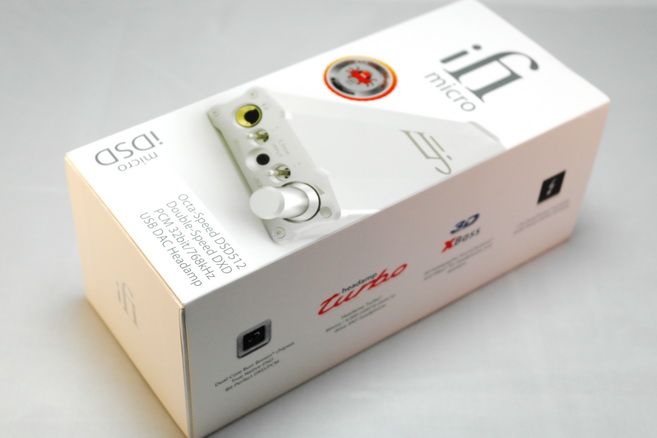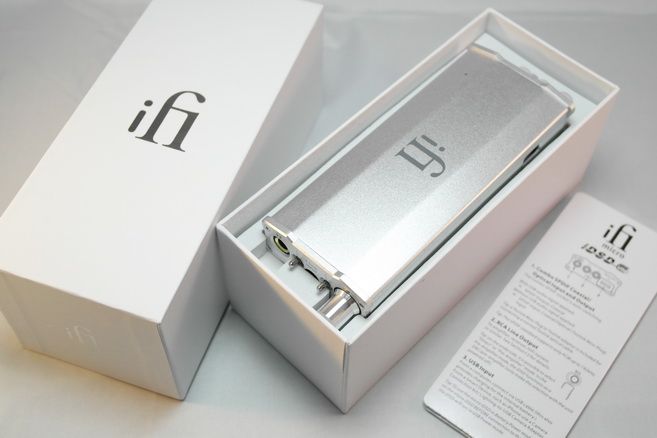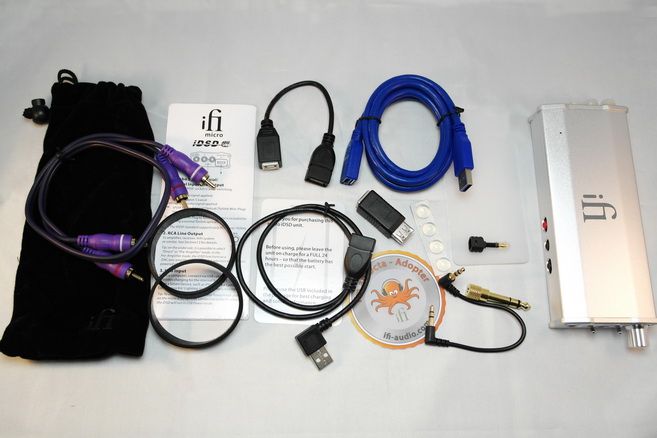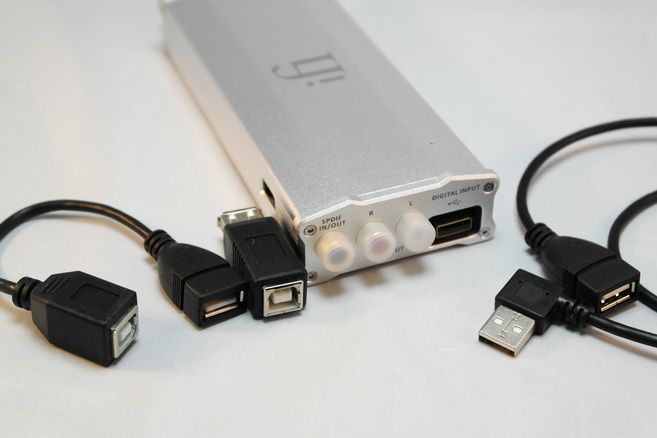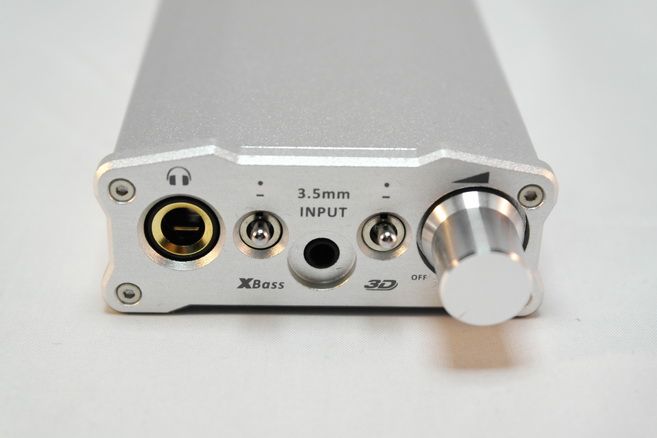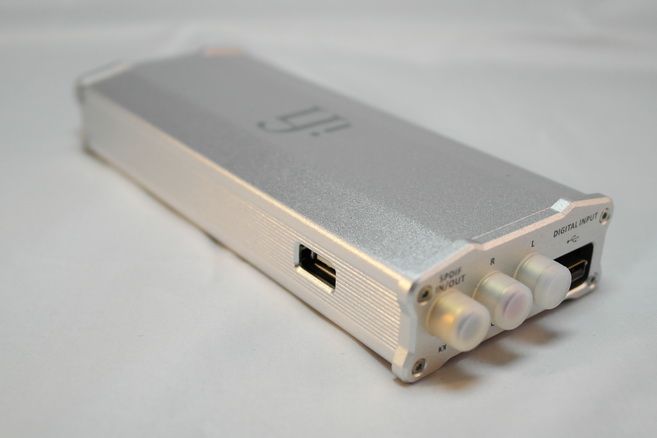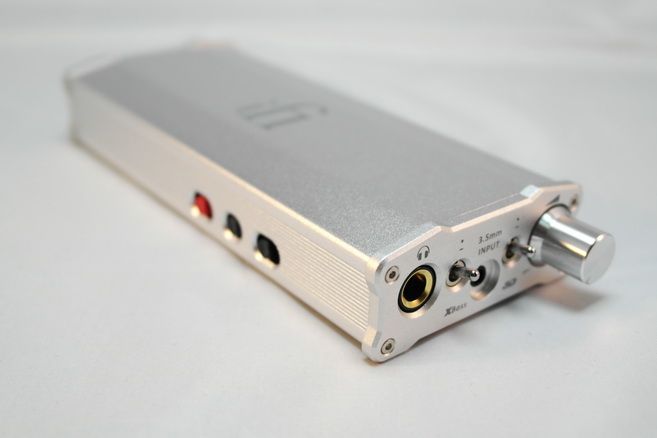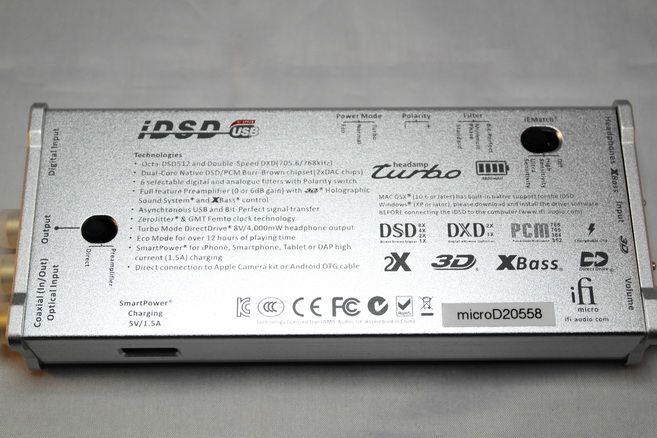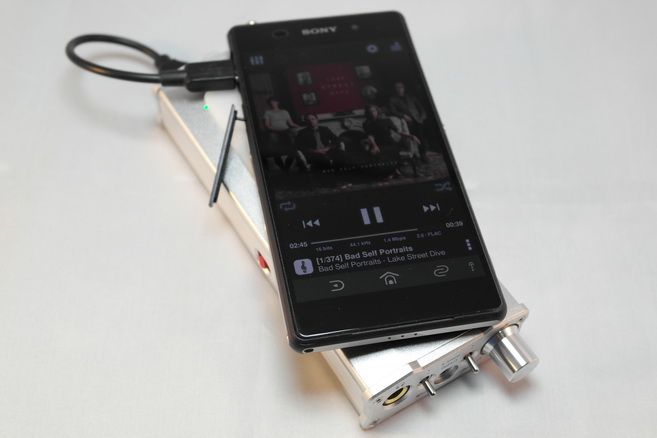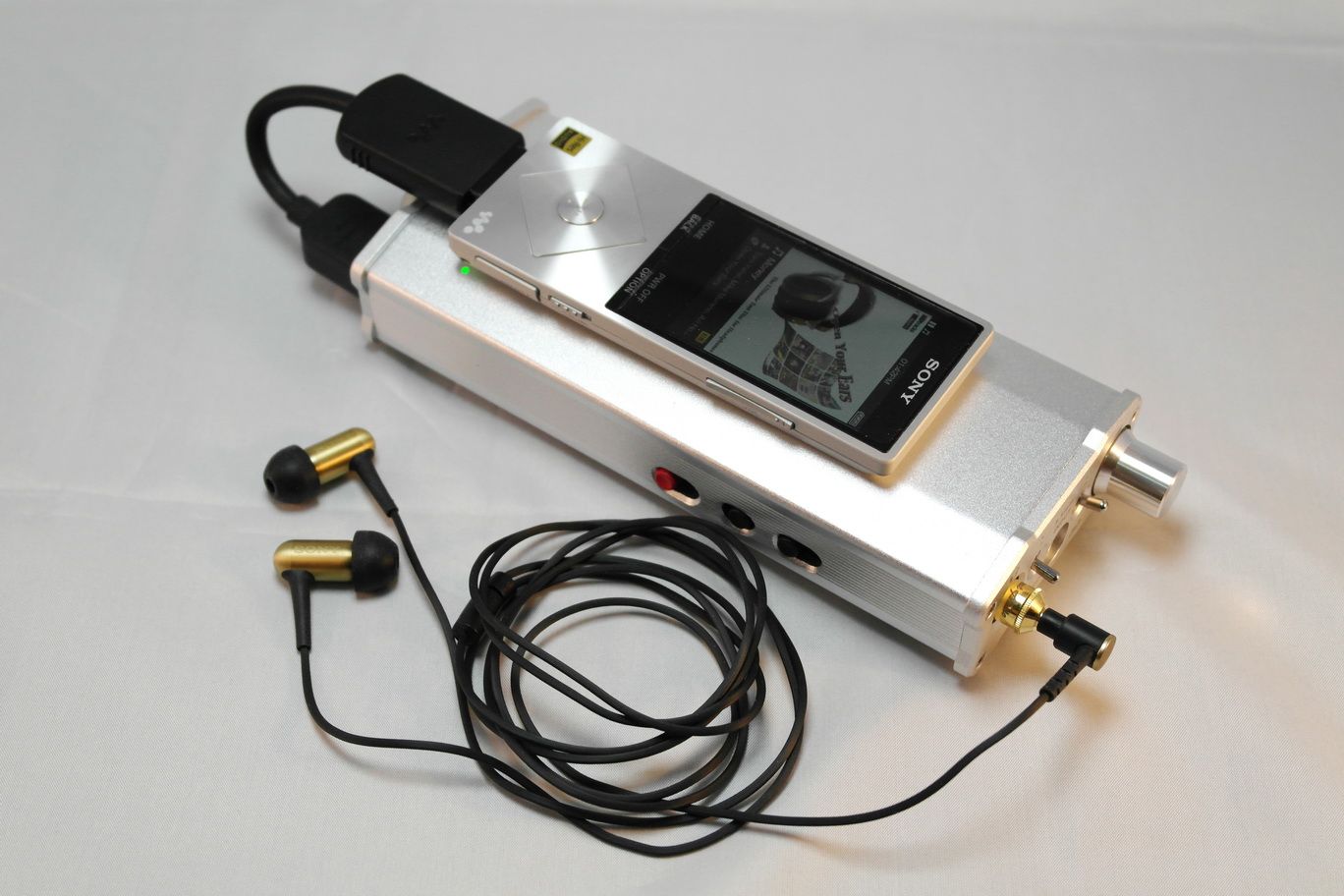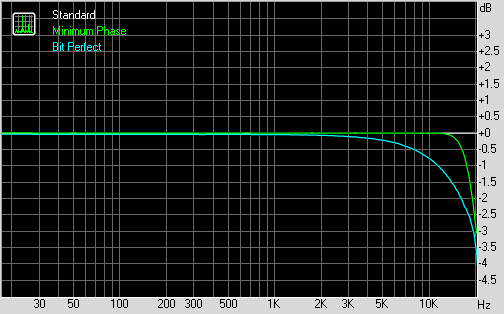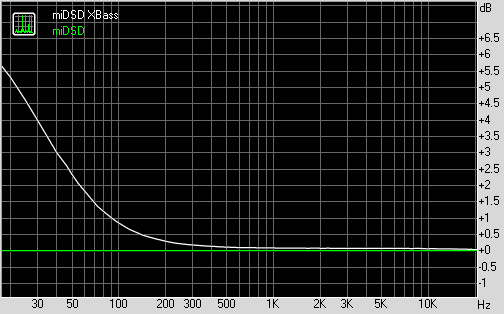****************New iFi iDSD Micro BLACK LABEL Review (3/20/2017) Original iDSD Micro Review below!
I haven't been able to separate the iDSD Micro Black Label review from the original iDSD Micro's old review, so I will build on what's already here:

Many thanks to Lawrance & the iFi team for allowing me to perform a "head-to-head" comparison between my trusty iDSD Micro, and the new iDSD Micro Black Label (from now on referred to as "BL")
So what is it? The iFi iDSD Micro BL is in my eyes, an evolution of the original iDSD Micro portable headphone amplifier.
So what's different? Well, it's Black with Orange print instead of the original's silver with black print. I have read that there are some improvements in "fit and finish", but as I still have no noticeable flaws in my original unit, I can't speak to that myself. In truth, most of the difference is "under the hood", so to speak. Improved components in terms of clock timings, circuitry, power, & the like. (I'm not a spec guy, as you might have guessed.)
**SPOILER** (If you just want the bottom line, here it is up-front,)
So do I think it is worth it? 2 answers for 2 groups:
If you don't already own an iDSD Micro - YES! This is quite possibly one of the strongest portable amp offerings that I have ever heard of in the sub $2,000 USD portable headphone amp category, period. Add to that, a very sophisticated and clean DAC section, and you have a portable that can hold its own against many desktop class components out there.
If you already own an iDSD Micro - Maybe? The problem here is that there wasn't anything that I considered "wrong" with the original. Yes, there is a certain refinement to the sound of the new iDSD BL when I do A/B side-by-side comparisons between the 2., and yes, if I had the opportunity to buy either at the same price, I'd buy the new unit. But while the changes are indeed for the better in the new unit to my ears, they are subtle. In truth, if I were to listen to them hours apart, I'd be hard-pressed to separate the differences between the two from other variations like changes of headphone positioning and quality of seal between the pads and my ears.
So let's take a look at what I've been rambling about:

As you can see, my old unit even after years of coast to coast trips still looks pretty darn good! No problems with construction, switches, or ports. The label for the serial # has worn away a bit, and some of the lettering on the bottom of the unit has rubbed-off from constant handling. (Hey, my hands sweat a lot in the summer sometimes!) So when I saw the two side-by-side, I was pretty impressed! Most of my gear gets replaced on an annual basis due to "wear and tear" from my mobile lifestyle. (My iDSD Micro has easily seen 12+ of the 50 states, and many of them multiple times.)
Underneath, they are again essentially identical. (I faded the serial labels purposefully as a courtesy to iFi)

And here you can truly see wear on my old unit. Still not bad after years of abuse! (I USE my gear regularly, so they don't stay museum quality sadly...)

So, why did I spend so much time showing the physical characteristics? In truth, I struggled with this review. The new iDSD BL is very similar to my original. I can't tell you that the battery lasts longer, that it drives headphones much stronger, or that there is an upgrade in construction. Why? I suspect that it's because the original never needed improvement. My old iDSD's battery STILL lasts longer than any of my cell phones or my DAP's batteries. The construction is tough enough to take a tumble from my lap, to airport/airplane/hotel floors, (Typically carpeted) and not show it. The power output rivals my Schiit Audio's AGARD 2 dedicated DESKTOP headphone amp while running off battery power., The only thing that I could have asked for is an ON/OFF switch, so that I could leave my volume levels the same when I return to listening. (Like if I'm comparing different headphones head-to-head and want as little variation as possible.)
So what do you get in terms of sound quality?
AMP Section - With the iDSD BL, you get just a little more of what you get from the original. I spent DAYS trying to find that "A-HA moment" when a clear and defining difference would jump out at me. It just never happened. What I heard was a mellow, SPACIOUS sound. Just like the original. The fine detail is a little tighter on the original, and more "musical" on the BL. (I had to listen to Sennheiser HD-650, HD-800, AKG 545/550, JVC HA-SZ2000, and Beyerdynamics T1 ver.2 headphones repeatedly in succession in order to be sure, as each demonstrates their strengths accordingly. In short, it's a matter of taste. The original will please those seeking a more analytical presentation, while the BL might please those who felt the original could be just a tad harsh.
DAC Section - Again, SUBTLE differences between the two. The BL only really sounded different on the T1 & HD-800. The other headphones sounded essentially identical on both when evaluating their DAC performances. The T1 just sounded a little crisper on the original, and slightly more "musical" on the BL. The HD-800 showed the difference to a slightly greater degree, and was slightly more fatiguing on the original. If I only owned HD-800s, I would upgrade to the BL for this reason more than all the other subtle differences combined.
For music, I chose "What God Wants Part-1" (Roger Waters), "Drink Up Me Hearties" (Hans Zimmer), "Why Me?" (Planet P Project), "La Sagrada Familia" (Alan Parsons Project), "Thriller" (Michael Jackson), "The Kids Aren't Alright" (The Offspring), "On My Level" (Wiz Khalifa (MY ultimate BASS evaluation track!)), "Ave Maria, for voice & piano" (Mario Lanza) Each tracks sampled between Mp3, FLAC, & DSD quality versions. (Except Mario Lanza, who I only had in CD format.)
Equipment - DAPs iPhone 4S, 5, 6, & 7+, & iPAD Air, iBASSO DX90, Lenovo Yoga A12 (Android version), Dell XPS 8500 (Win 10, 64GB, Foobar2000/JRiver Media Center 21) Schiit Audio ASGARD 2 Forza Audio cables
***************************************Original iDSD Micro Review*******************************
5 Stars
Summary: Incredible DAC capable of more than what most users will need for the foreseeable future
Pros
Incredible detail and clarity with more power than any portable has a right to put out.
Cons
No actual on/off switch (It would be nice to leave the volume knob where it is when you turn it off), Larger size is pushing the portable envelope
I will leave the technical speak and unboxing play-by-play to the reviews that are already here, done by people who do a much better job than I can currently manage. Just know that the iDSD Micro comes with EVERYTHING that I could ask for to get started in terms of connectivity and accessories already in the box.
First: When I bought my iDSD Micro, it was $499. It has gone up since then, but if I was to buy it all over again, I'd still do so as I've heard nothing that touches it in the sub-$2,400 portable DAC/Amp market.
I completely lucked-into finding this device simply because I wanted a device that would make my iBASSO DX90 work with my Sennheiser HD-650s in hotel rooms.
(No, I'm not one of those people who would blast my fellow plane passengers with whatever I'm listening to with open back headphones....)
At first I had a FIIO e17 that I had intended to use with my iPhones (4S & 5) and iPad Air, but learned the hard way that there is no simple way to make that combo work. So I looked for another solution that would provide a better DAC and enough power to make my HD-650s sound "full" rather than anemic. The iDSD Micro connects to new-style "Lightning" i-devices simply through a Camera Connection Kit (C.C.K.) cable. Nice and neat! (Though the old 30-pin apple devices will need a short USB cable to attach the C.C.K. to the iDSD Micro)
Boy did I get more than I bargained for. The iDSD Micro's brightness really brought some crispness to the HD-650s which some have called "veiled". They do not sound veiled to me at all with this combo. If I were listening to the GRADO 225Es that I had tried, the highs were far too "sparkly" and I didn't care for them. Nothing against the headphones, they just didn't fit my tastes with this combo. Now there is another "DARK SIDE" that I learned that the iDSD Micro excels at; BASSHEAD HEADPHONES! I'm a part-time Basshead, and sometimes just want some jaw-rattling "THUMP" to my music. Enter the JVC HA-SZ2000 (Kings!), JVC HA-M55x, and Photive PH-BTX6. In order of Bass capability. One of the first comments about each of these headphones is that they have recessed mids that you'll have to EQ heavily for. Not so with the iDSD Micro! Add some 3D to make them feel less closed-in, but retain their bass slam. Then flip the XBASS switch and EQ your songs to your tastes. The iDSD never falls short for pushing power through your phones, and the DAC/amp combo works nicely to tighten-up the bass on all three, but especially the PH-BTX6 as it is the most bloated. The SZ2000s just keep pulling more and more sub-bass out if the source song has it. Some songs just THUMP, but never get loose and sloppy with the SZ2000s. This is not the case with other amp/DAC combos I've tried. like the FIIO e17. It makes all 3 of them louder, but doesn't do much to help keep the dynamics of the music "civilized" once the BASS gets raised beyond moderate levels. Likewise with my tabletop SCHIIT Audio ASGARD 2 amp. It does an AWESOME job with making classical, rock, pop, or jazz/Blues sound like new discoveries with the HD-650s, but there is just more loudness when you try to blow up the bass without any or much control over it's presentation.
I don't use IEMs often, but when I plug up my UE Super-Fi3s (90% of what I listen to) or VMODA Bass Freqs (For the occasional "in-ear" bass-heavy listening) I set the iDSD micro to "NORMAL" mode for most rock/pop/BASS-heavy listening, and down further to "ECO" mode for classical/lyrical music; all set to "Hi Sensitivity" on IE match settings. (I've never had to use the "Ultra Sensitivity" setting for super-sensitive IEMs, but it is nice to know that it is there if I ever needed it.)
So in summary: Portable DAC/Amp that rivals some desktop/rack solutions for power output and performance. Does a great job with High-end music formats (DSD, DXD, FLAC, etc..) making old favorites sound like I've heard them for the first time. If your headphones are slightly claustrophobic when it comes to soundstage, the 3D feature can help quite a bit without sounding "artificial". And lastly, if you are a TRUE basshead, I've never heard a portable amp that causes your music to actual bring home the slam as powerfully and neatly as the iDSD Micro does.
I haven't been able to separate the iDSD Micro Black Label review from the original iDSD Micro's old review, so I will build on what's already here:

Many thanks to Lawrance & the iFi team for allowing me to perform a "head-to-head" comparison between my trusty iDSD Micro, and the new iDSD Micro Black Label (from now on referred to as "BL")
So what is it? The iFi iDSD Micro BL is in my eyes, an evolution of the original iDSD Micro portable headphone amplifier.
So what's different? Well, it's Black with Orange print instead of the original's silver with black print. I have read that there are some improvements in "fit and finish", but as I still have no noticeable flaws in my original unit, I can't speak to that myself. In truth, most of the difference is "under the hood", so to speak. Improved components in terms of clock timings, circuitry, power, & the like. (I'm not a spec guy, as you might have guessed.)
**SPOILER** (If you just want the bottom line, here it is up-front,)
So do I think it is worth it? 2 answers for 2 groups:
If you don't already own an iDSD Micro - YES! This is quite possibly one of the strongest portable amp offerings that I have ever heard of in the sub $2,000 USD portable headphone amp category, period. Add to that, a very sophisticated and clean DAC section, and you have a portable that can hold its own against many desktop class components out there.
If you already own an iDSD Micro - Maybe? The problem here is that there wasn't anything that I considered "wrong" with the original. Yes, there is a certain refinement to the sound of the new iDSD BL when I do A/B side-by-side comparisons between the 2., and yes, if I had the opportunity to buy either at the same price, I'd buy the new unit. But while the changes are indeed for the better in the new unit to my ears, they are subtle. In truth, if I were to listen to them hours apart, I'd be hard-pressed to separate the differences between the two from other variations like changes of headphone positioning and quality of seal between the pads and my ears.
So let's take a look at what I've been rambling about:

As you can see, my old unit even after years of coast to coast trips still looks pretty darn good! No problems with construction, switches, or ports. The label for the serial # has worn away a bit, and some of the lettering on the bottom of the unit has rubbed-off from constant handling. (Hey, my hands sweat a lot in the summer sometimes!) So when I saw the two side-by-side, I was pretty impressed! Most of my gear gets replaced on an annual basis due to "wear and tear" from my mobile lifestyle. (My iDSD Micro has easily seen 12+ of the 50 states, and many of them multiple times.)
Underneath, they are again essentially identical. (I faded the serial labels purposefully as a courtesy to iFi)

And here you can truly see wear on my old unit. Still not bad after years of abuse! (I USE my gear regularly, so they don't stay museum quality sadly...)

So, why did I spend so much time showing the physical characteristics? In truth, I struggled with this review. The new iDSD BL is very similar to my original. I can't tell you that the battery lasts longer, that it drives headphones much stronger, or that there is an upgrade in construction. Why? I suspect that it's because the original never needed improvement. My old iDSD's battery STILL lasts longer than any of my cell phones or my DAP's batteries. The construction is tough enough to take a tumble from my lap, to airport/airplane/hotel floors, (Typically carpeted) and not show it. The power output rivals my Schiit Audio's AGARD 2 dedicated DESKTOP headphone amp while running off battery power., The only thing that I could have asked for is an ON/OFF switch, so that I could leave my volume levels the same when I return to listening. (Like if I'm comparing different headphones head-to-head and want as little variation as possible.)
So what do you get in terms of sound quality?
AMP Section - With the iDSD BL, you get just a little more of what you get from the original. I spent DAYS trying to find that "A-HA moment" when a clear and defining difference would jump out at me. It just never happened. What I heard was a mellow, SPACIOUS sound. Just like the original. The fine detail is a little tighter on the original, and more "musical" on the BL. (I had to listen to Sennheiser HD-650, HD-800, AKG 545/550, JVC HA-SZ2000, and Beyerdynamics T1 ver.2 headphones repeatedly in succession in order to be sure, as each demonstrates their strengths accordingly. In short, it's a matter of taste. The original will please those seeking a more analytical presentation, while the BL might please those who felt the original could be just a tad harsh.
DAC Section - Again, SUBTLE differences between the two. The BL only really sounded different on the T1 & HD-800. The other headphones sounded essentially identical on both when evaluating their DAC performances. The T1 just sounded a little crisper on the original, and slightly more "musical" on the BL. The HD-800 showed the difference to a slightly greater degree, and was slightly more fatiguing on the original. If I only owned HD-800s, I would upgrade to the BL for this reason more than all the other subtle differences combined.
For music, I chose "What God Wants Part-1" (Roger Waters), "Drink Up Me Hearties" (Hans Zimmer), "Why Me?" (Planet P Project), "La Sagrada Familia" (Alan Parsons Project), "Thriller" (Michael Jackson), "The Kids Aren't Alright" (The Offspring), "On My Level" (Wiz Khalifa (MY ultimate BASS evaluation track!)), "Ave Maria, for voice & piano" (Mario Lanza) Each tracks sampled between Mp3, FLAC, & DSD quality versions. (Except Mario Lanza, who I only had in CD format.)
Equipment - DAPs iPhone 4S, 5, 6, & 7+, & iPAD Air, iBASSO DX90, Lenovo Yoga A12 (Android version), Dell XPS 8500 (Win 10, 64GB, Foobar2000/JRiver Media Center 21) Schiit Audio ASGARD 2 Forza Audio cables
***************************************Original iDSD Micro Review*******************************
5 Stars
Summary: Incredible DAC capable of more than what most users will need for the foreseeable future
Pros
Incredible detail and clarity with more power than any portable has a right to put out.
Cons
No actual on/off switch (It would be nice to leave the volume knob where it is when you turn it off), Larger size is pushing the portable envelope
I will leave the technical speak and unboxing play-by-play to the reviews that are already here, done by people who do a much better job than I can currently manage. Just know that the iDSD Micro comes with EVERYTHING that I could ask for to get started in terms of connectivity and accessories already in the box.
First: When I bought my iDSD Micro, it was $499. It has gone up since then, but if I was to buy it all over again, I'd still do so as I've heard nothing that touches it in the sub-$2,400 portable DAC/Amp market.
I completely lucked-into finding this device simply because I wanted a device that would make my iBASSO DX90 work with my Sennheiser HD-650s in hotel rooms.
(No, I'm not one of those people who would blast my fellow plane passengers with whatever I'm listening to with open back headphones....)
At first I had a FIIO e17 that I had intended to use with my iPhones (4S & 5) and iPad Air, but learned the hard way that there is no simple way to make that combo work. So I looked for another solution that would provide a better DAC and enough power to make my HD-650s sound "full" rather than anemic. The iDSD Micro connects to new-style "Lightning" i-devices simply through a Camera Connection Kit (C.C.K.) cable. Nice and neat! (Though the old 30-pin apple devices will need a short USB cable to attach the C.C.K. to the iDSD Micro)
Boy did I get more than I bargained for. The iDSD Micro's brightness really brought some crispness to the HD-650s which some have called "veiled". They do not sound veiled to me at all with this combo. If I were listening to the GRADO 225Es that I had tried, the highs were far too "sparkly" and I didn't care for them. Nothing against the headphones, they just didn't fit my tastes with this combo. Now there is another "DARK SIDE" that I learned that the iDSD Micro excels at; BASSHEAD HEADPHONES! I'm a part-time Basshead, and sometimes just want some jaw-rattling "THUMP" to my music. Enter the JVC HA-SZ2000 (Kings!), JVC HA-M55x, and Photive PH-BTX6. In order of Bass capability. One of the first comments about each of these headphones is that they have recessed mids that you'll have to EQ heavily for. Not so with the iDSD Micro! Add some 3D to make them feel less closed-in, but retain their bass slam. Then flip the XBASS switch and EQ your songs to your tastes. The iDSD never falls short for pushing power through your phones, and the DAC/amp combo works nicely to tighten-up the bass on all three, but especially the PH-BTX6 as it is the most bloated. The SZ2000s just keep pulling more and more sub-bass out if the source song has it. Some songs just THUMP, but never get loose and sloppy with the SZ2000s. This is not the case with other amp/DAC combos I've tried. like the FIIO e17. It makes all 3 of them louder, but doesn't do much to help keep the dynamics of the music "civilized" once the BASS gets raised beyond moderate levels. Likewise with my tabletop SCHIIT Audio ASGARD 2 amp. It does an AWESOME job with making classical, rock, pop, or jazz/Blues sound like new discoveries with the HD-650s, but there is just more loudness when you try to blow up the bass without any or much control over it's presentation.
I don't use IEMs often, but when I plug up my UE Super-Fi3s (90% of what I listen to) or VMODA Bass Freqs (For the occasional "in-ear" bass-heavy listening) I set the iDSD micro to "NORMAL" mode for most rock/pop/BASS-heavy listening, and down further to "ECO" mode for classical/lyrical music; all set to "Hi Sensitivity" on IE match settings. (I've never had to use the "Ultra Sensitivity" setting for super-sensitive IEMs, but it is nice to know that it is there if I ever needed it.)
So in summary: Portable DAC/Amp that rivals some desktop/rack solutions for power output and performance. Does a great job with High-end music formats (DSD, DXD, FLAC, etc..) making old favorites sound like I've heard them for the first time. If your headphones are slightly claustrophobic when it comes to soundstage, the 3D feature can help quite a bit without sounding "artificial". And lastly, if you are a TRUE basshead, I've never heard a portable amp that causes your music to actual bring home the slam as powerfully and neatly as the iDSD Micro does.









































































































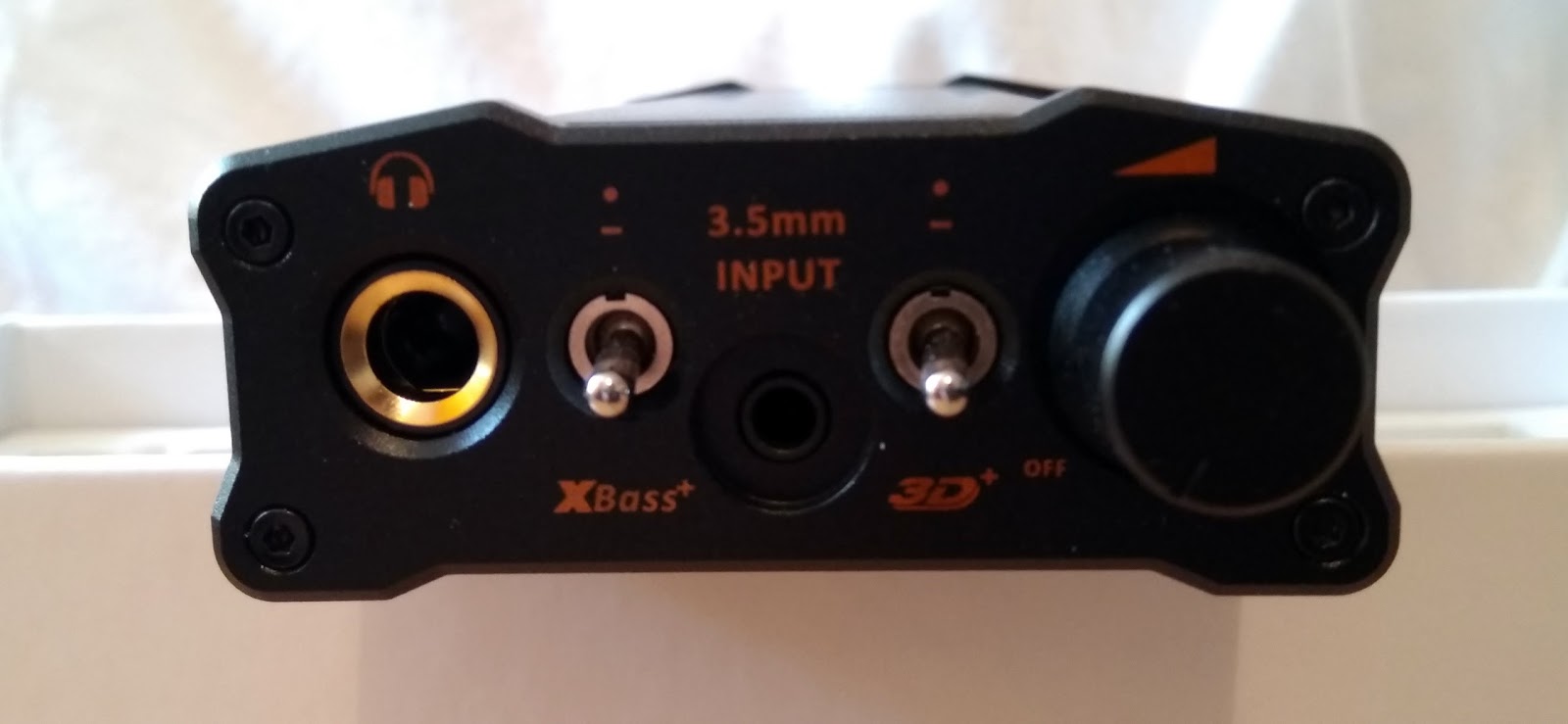





















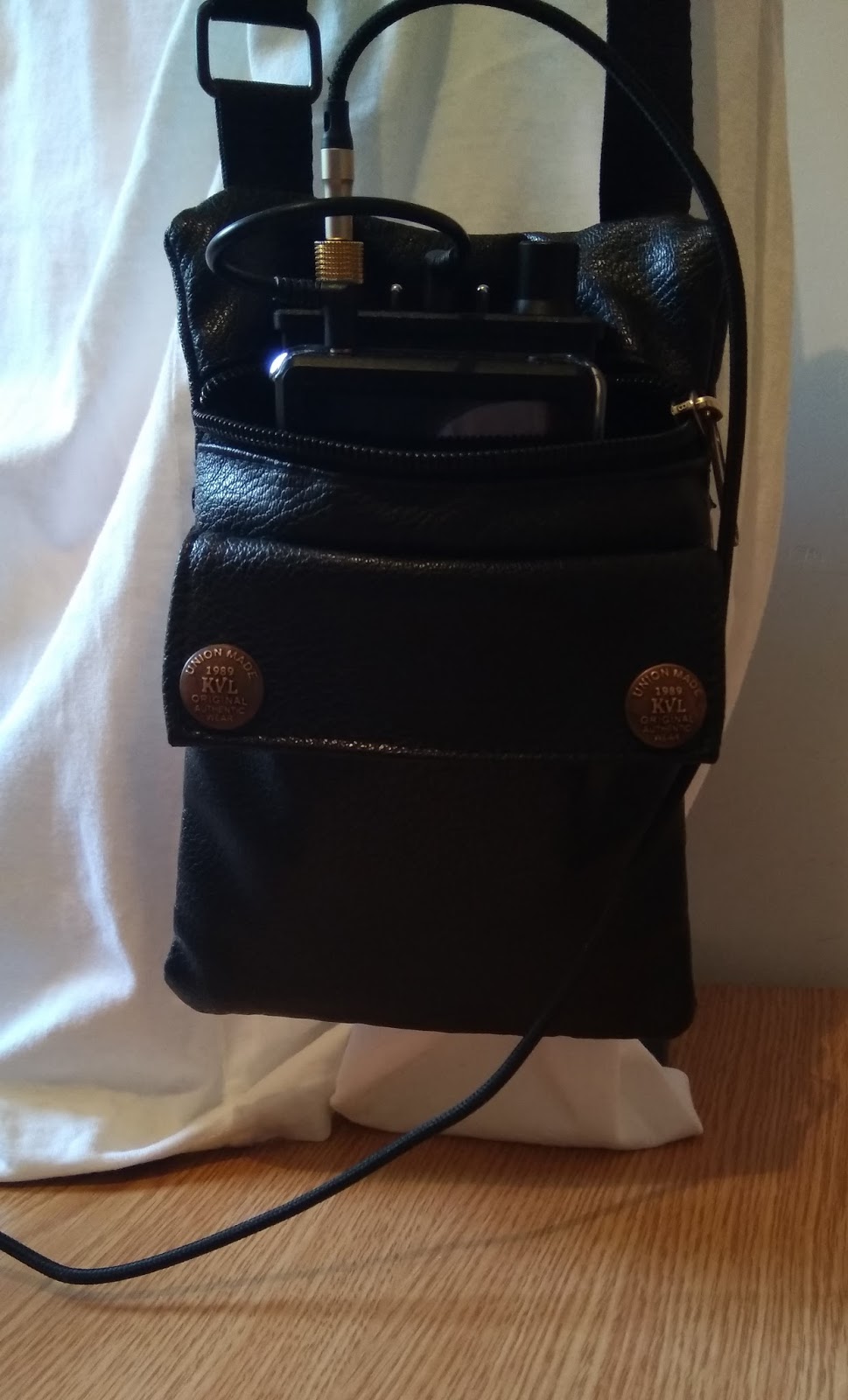
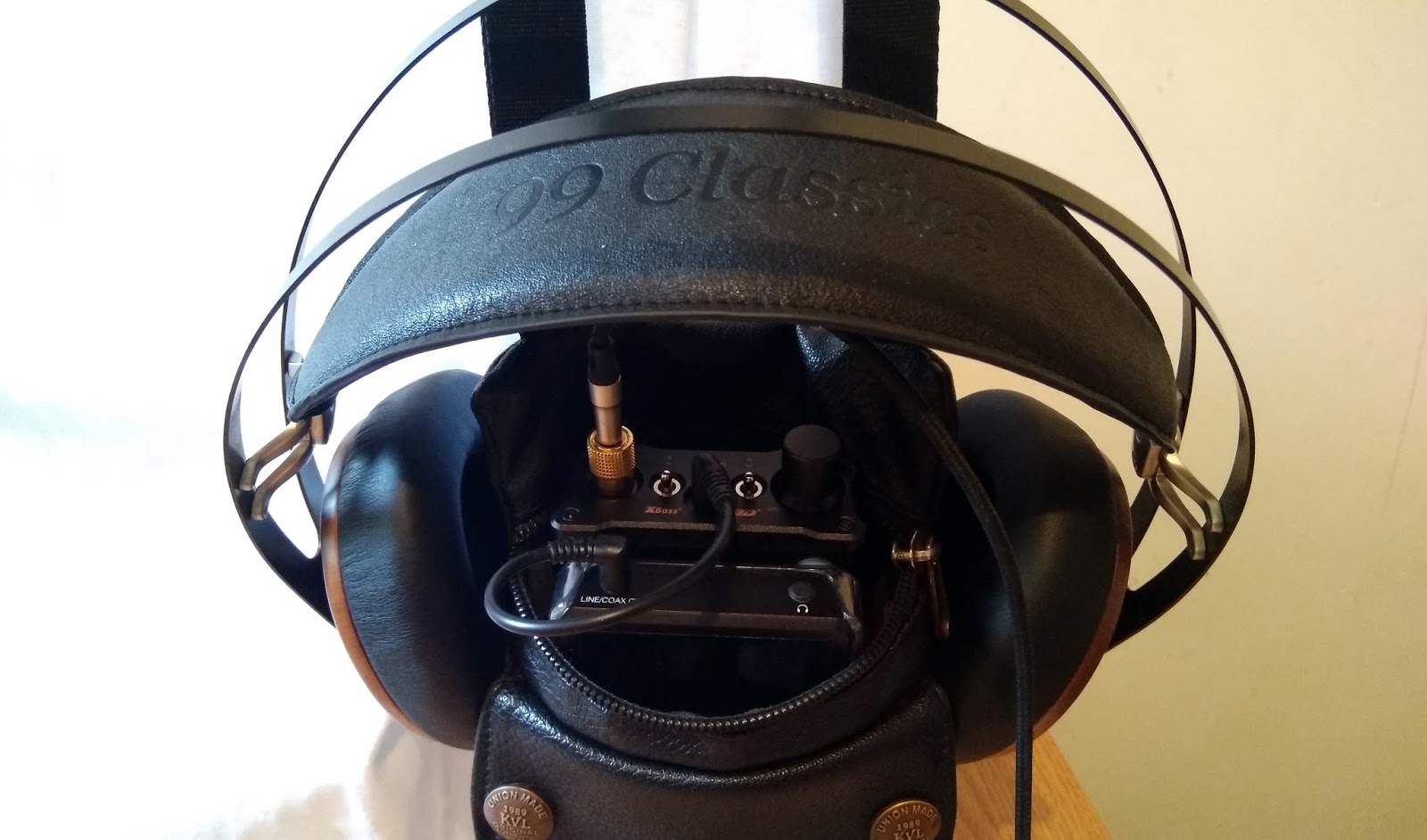






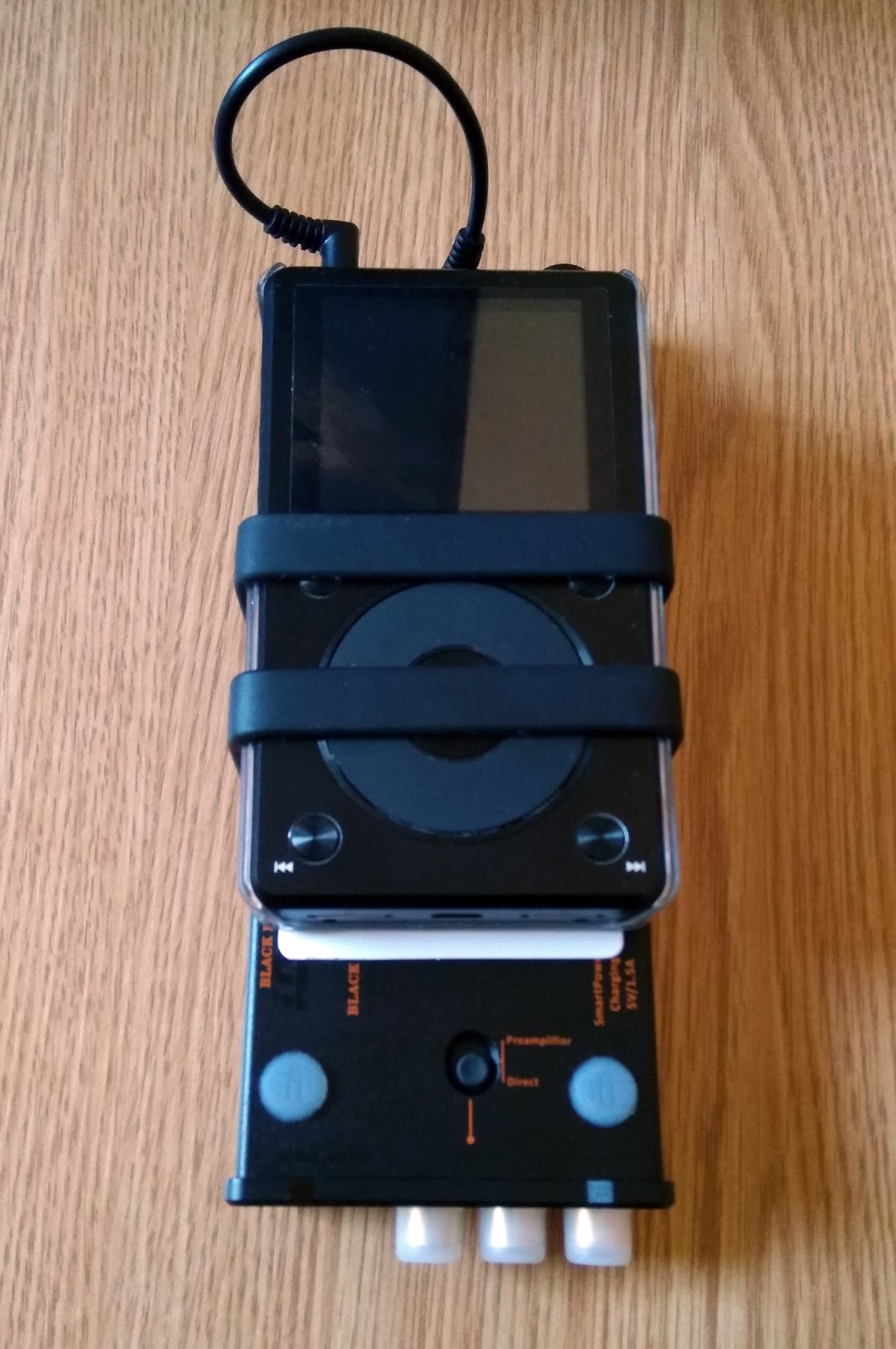



 ) Now I understand what people mean when people say they are bass-heavy. Bass didn't seem so pronounced using my anemic cell phone. I'll keep using them when on-the-go.....not at home.
) Now I understand what people mean when people say they are bass-heavy. Bass didn't seem so pronounced using my anemic cell phone. I'll keep using them when on-the-go.....not at home.









































